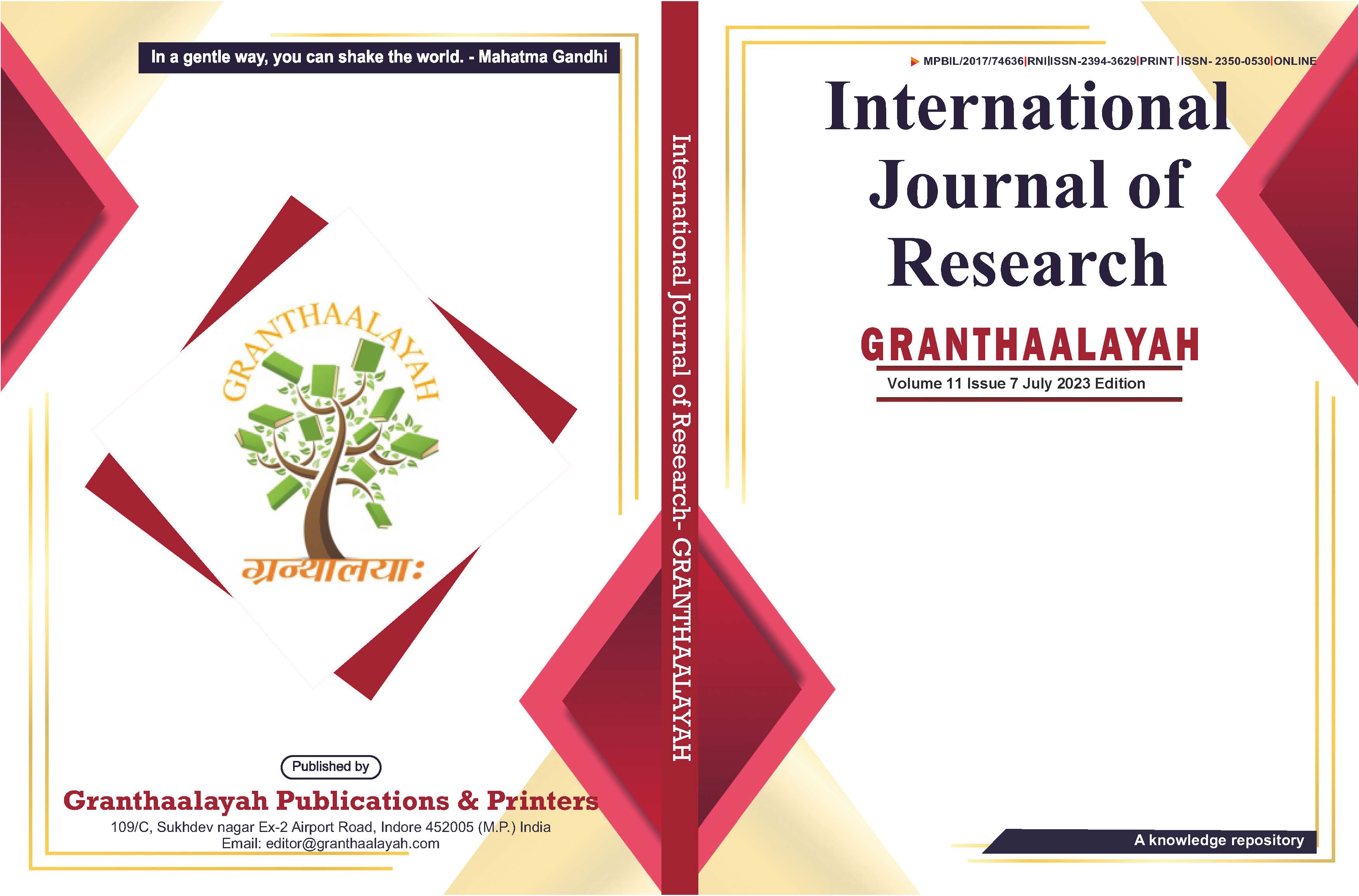PROPOSED MECHANISM FOR BREAST CANCER METASTASIS: THE PIERCING AND SUCTIONING OF CANCER CELLS MATERIAL INTO THE INTERCELLULAR SPACE DURING CRYSTALLIZATION
DOI:
https://doi.org/10.29121/granthaalayah.v11.i7.2023.5237Keywords:
Crystallization Factor, Backwards Suction, Microcalcifications Genesis, Breast Cancer Metastasis, Hydroxyapatite, Lymph NodesAbstract [English]
The purpose of this manuscript is to introduce a hypothesis correlating the process of hydroxyapatite crystallization as a factor allowing for the transfer of intracellular breast cancer matter into the intercellular space by rupturing cellular outer membranes. In addition, this matter could also be transferred into the lymphatic system to be disseminated, thus metastasis. The hypothesis is supported by published in vitro experiments where during crystallization lipid cells are being ruptured by advancing crystals. As fluid evaporates during crystallization, a Backwards Suction (BS) phenomenon of cells and debris has been also documented to occur during crystals formation of the anisotropic Potassium Ferricyanide when within approximately 1 mm of human tissue. This BS during crystals formation is herein hypothesized to be a mechanism dislodging tissue in type II ductal fragile malignant breast cancer tissue. The cellular material would then be pierced by the crystals and suctioned by the lymphatic circulation with its consequences.
Downloads
References
B. N. Figgis, Malcolm Gerloch, Ronald Mason, and Ronald Sydney (1969). Nyholm the Crystallography and Paramagnetic Anisotropy of Potassium Ferricyanide. https://doi.org/10.1098/rspa.1969.0031. DOI: https://doi.org/10.1098/rspa.1969.0031
B. Viswanath, R. Raghavan, U. Ramamurty, N. Ravishankar. (2007). Mechanical Properties and Anisotropy in Hydroxyapatite Single Crystals. Scripta Materialia, 57(4), 361–364. https://doi.org/10.1016/j.scriptamat.2007.04.027. DOI: https://doi.org/10.1016/j.scriptamat.2007.04.027
Castellanos, M. R., Paramanathan, K., El-Sayegh, S., Forte, F., Buchbinder, S., & Kleiner, M. (2008). Breast Cancer Screening in Women with Chronic Kidney Disease: The Unrecognized Effects of Metastatic Soft-Tissue Calcification. Nature Clinical Practice. Nephrology, 4(6), 337–341. https://doi.org/10.1038/ncpneph0804. DOI: https://doi.org/10.1038/ncpneph0804
Cox, R. F., & Morgan, M. P. (2013). Microcalcifications in Breast Cancer. Lessons from Physiological Mineralization. Bone, 53(2), 437–450., PubMed: 23334083, https://doi.org/10.1016/j.bone.2013.01.013. DOI: https://doi.org/10.1016/j.bone.2013.01.013
Embi BS, A. A. (2022). Introducing Hydrocolloid Wound Dressing Energy Disrupting Human Tissue Metabolism. International Journal of Research -GRANTHAALAYAH, 10(10), 58–65. https://doi.org/10.29121/Granthaalayah.v10.i10.2022.4836. DOI: https://doi.org/10.29121/granthaalayah.v10.i10.2022.4836
Embi, A. A. (2022). Introducing Methodology to Detect Dead Tissue Stored Energy. International Journal of Research -GRANTHAALAYAH, 10(8), 20–29. https://doi.org/10.29121/granthaalayah.v10.i8.2022.4733. DOI: https://doi.org/10.29121/granthaalayah.v10.i8.2022.4733
Embi, A. A. (2023). Introducing Electromagnetic Energy from Hydrocolloid Wound Dressing Paste Penetrating a Glass Barrier Disrupting Human Skin Lipid Droplets Size and Membranes: Possible Implications in Cancer Cells Genesis and/or Cure. International Journal of Research -GRANTHAALAYAH, 11(2), 47–54. https://doi.org/10.29121/Granthaalayah.v11.i2.2023.5032. DOI: https://doi.org/10.29121/granthaalayah.v11.i2.2023.5032
Embí, A. A. BS MBA. (2020). Introducing Crystallization Backward Suction Trapping Lipids and Debris as Proposed Additional Factor in the Genesis of Coronary Artery Disease. International Journal of Research -GRANTHAALAYAH, 8(9), 215–233. https://doi.org/10.29121/granthaalayah.v8.i9.2020.1174. DOI: https://doi.org/10.29121/granthaalayah.v8.i9.2020.1174
Gosling, S., Scott, R., Greenwood, C., Bouzy, P., Nallala, J., Lyburn, I. D., Stone, N., & Rogers, K. (2019). Calcification Microstructure Reflects Breast Tissue Microenvironment. Journal of Mammary Gland Biology and Neoplasia, 24(4), 333–342. https://doi.org/10.1007/s10911-019-09441-3 Dec. Epub 2019 Dec 5, 333–342., PubMed: 31807966, PubMed Central: PMC690855. https://doi.org/10.1007/s10911-019-09441-3. DOI: https://doi.org/10.1007/s10911-019-09441-3
Haka, A. S., Shafer-Peltier, K. E., Fitzmaurice, M., Crowe, J., Dasari, R. R., & Feld, M. S. (2002, September 15). Identifying Microcalcifications in Benign and Malignant Breast Lesions by Probing Differences in Their Chemical Composition Using Raman Spectroscopy. Cancer Research, 62(18), 5375–5380. https://pubmed.ncbi.nlm.nih.gov/12235010/.
He, F., Springer, N. L., Whitman, M. A., Pathi, S. P., Lee, Y., Mohanan, S., Marcott, S., Chiou, A. E., Blank, B. S., Iyengar, N., Morris, P. G., Jochelson, M., Hudis, C. A., Shah, P., Kunitake, J. A. M. R., Estroff, L. A., Lammerding, J., & Fischbach, C. (2019). Dec. Hydroxyapatite Mineral Enhances Malignant Potential in a Tissue-Engineered Model of Ductal Carcinoma in Situ (DCIS). Biomaterials, 224, 119489. Epub September 11, 2019. https://doi.org/10.1016/j.biomaterials.2019.119489. DOI: https://doi.org/10.1016/j.biomaterials.2019.119489
Published
How to Cite
Issue
Section
License
Copyright (c) 2023 Abraham A. Embi

This work is licensed under a Creative Commons Attribution 4.0 International License.
With the licence CC-BY, authors retain the copyright, allowing anyone to download, reuse, re-print, modify, distribute, and/or copy their contribution. The work must be properly attributed to its author.
It is not necessary to ask for further permission from the author or journal board.
This journal provides immediate open access to its content on the principle that making research freely available to the public supports a greater global exchange of knowledge.

























